
10 minute read
The season is upon us
JAPANESE KNOTWEED: THE SEASON IS UPON US

Early Season Identification You might have noticed as the weather improves and the days become longer, that Japanese knotweed growing season is upon us. The emergence of knotweed depends on the weather, but as a guide, it starts to appear between March and April, with shoots that look like red/ purple asparagus spears.
As it grows, the shoots uncurl, revealing lime-green shovel-shaped leaves. The stem has the indicative zig-zig, with visible purple speckles. The fastest growth-period is during spring and by late spring, canes can reach up to 3 metres high.

Japanese Knotweed: The Unkillable Thug Despite claims by some companies, Japanese knotweed cannot be killed or eradicated by herbicide application alone. It can be controlled via herbicide treatment, but the only way to eradicate it from a property is via excavation. Our excavation methods fully remove the knotweed from the ground. Our experts ensure complete Japanese knotweed removal, because leaving as little as 0.7g of rhizome could mean that knotweed re-grows.
Treatment vs Removal Treatment of Japanese knotweed is accomplished through our Herbicide Treatment Programme (HTP). An HTP involves methodical and carefully managed visits where the correct use of chemical over a sustained period will exhaust the plant and prevent the spread of knotweed. This removes the risk of damage being caused to property during the treatment period.
Our HTP is designed to cause maximum damage to the plant and achieve effective control in a short period of time. Suitable herbicides applied correctly can damage the knotweed crown and rhizome significantly enough to eventually prevent stem re-growth.

An HTP cannot guarantee complete eradication of the knotweed rhizomes and any disturbance to them could cause re-growth of the aerial knotweed and the rhizomes to restart growing.
Removal of Japanese knotweed is achieved by complete excavation of the affected soils. A root barrier can be installed to prevent knotweed ingress from neighbouring properties, if necessary.
The knotweed-contaminated soils are classed as controlled once removed from site. Therefore, an appropriate Waste Carriers Licence is required to transport the knotweed contaminated waste, which must be taken to landfill site licenced by the Environment Agency to receive knotweed.
Limitations of Treatment Herbicide treatment of knotweed is adequate in many cases and provides very effective control of knotweed.
Where there are plans for a change of land use, herbicide treatment is not a feasible remediation method as the underground rhizome is not removed. If you disturb the knotweed-affected area, even after treatment,
you are likely to spread any remaining rhizomes or even cause the knotweed to grow again. You will also invalidate any guarantee that came with the treatment. Change of land use could include the following:
• Landscaping • Driveway • Extension • Ground-levelling for shed or green-house installation • Pond installation • Path • Tarmacadam
Where change of land use is planned, you should advise that excavation is the only suitable method of remediating the knotweed. Whilst excavation is a more expensive option, paying for the excavation before any ground disturbance starts will be cheaper in the long run.

Excavation Options Not all properties or sites require a full-depth excavation. When we survey a site, we ensure we understand the planned works. Our recommended removal strategy will be the most cost-effective, whilst

Depending on the site size, we can consider a dig and burial strategy, where we bury the knotweed contaminated soils on site, encapsulated in a root barrier cell.
Alternatively, there is also the option of a dig and relocate. Using this method, we remove the knotweed from where it’s preventing the development of an area and relocate it to an alternative area. Once relocated, we treat it in situ, with a standard herbicide treatment programme.
The last option is dig and dump, which involves digging the knotweed affected soils out and removing them to a licenced landfill site. As a professional knotweed company, the UK Government encourages us via RPS 178 to only consider the dig and dump option if other options aren’t viable. However, dig and dump is most often most desirable option.
Know your Knotweed and your Options You probably feel confident in identifying Japanese knotweed at all stages of growth. However, if you’re unsure about a plant, use our free identification service: ident@ knotweed.co.uk. Send us an email with a few pictures of the suspect plant and we’ll get in touch with an answer.
If you’d like to brush up on your knotweed identification skills, see the Japanese Knotweed Identification page of our website.
You need to be confident you’re adopting the right approach to managing Japanese knotweed.
If you need help identifying Japanese knotweed, need a professional knotweed survey or simply some general knotweed advice, contact us on 0333 2414 413, email contact@knotweed.co.uk or visit japaneseknotweed.co.uk

CUTEX ROOT BARRIER PRODUCTS NEW RANGE HITS THE SPOT!


Recent research has demonstrated what PBA Solutions have known for years – that CuTex copper composite root barrier offers the dual action of physical obstruction and copper deterrent to roots. Added to this that CuTex is permeable and you have a product that is unique.
CuTex is a composite of woven and fleece polypropylene geotextiles, encapsulating a thin copper sheet. This geofabric is then microperforated making it permeable, yet it maintains its root prevention capabilities. The Centre for Plant Sciences at the University of Leeds demonstrated that CuTex not only acts as a physical barrier to roots, but the copper deters growth in root tips.
Harnessing these unique properties PBA Solutions have developed a new range of root barrier products. These include Tree RootRings, Bamboo Troughs and Planters. Designed to keep in check some of the potentially rampant plants that we grow in our landscapes they offer a step further in the technology of planting for success.
The Tree RootRings, pre-formed to locate in planting pits, act as deflectors encouraging roots to grow downwards away from landscaping hard surfaces. Because CuTex is permeable no water accumulations will occur, maintaining ambient moisture levels.
Bamboo Troughs make installing bamboo screens a cinch. Plants are contained and managed while still allowing them to flourish healthily. Thanks again to the permeability of CuTex.
CuTex Root Barrier has long been used for boundary protection for Japanese knotweed, lining excavations and cell burial where Japanese knotweed needs to be eradicated. It is also ideal to prevent roots hitting utilities and structures, including pathways.
PBA have been supplying CuTex by the roll for more complex larger scenarios including subsidence remediation, civil engineering projects as well as property development and Japanese knotweed eradication.
CuTex knotweed root barrier meets the Environment Agency Code of Practice criteria for Japanese knotweed containment and uniquely can be installed both vertically and horizontally without impeding soilwater movement. Say goodbye to wet-side and puddle problems!
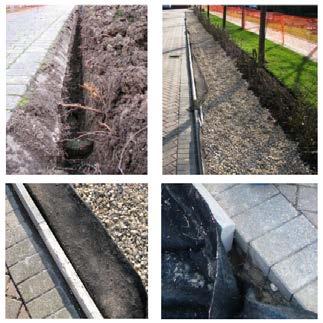
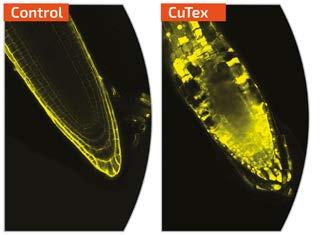

For friendly advice and further details call 01202 816134
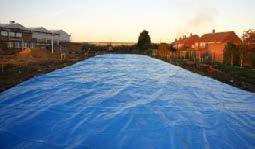

rootbarrier.com
Protect against damage from tree roots, Japanese Knotweed and other invasive plant species


DENDRO-SCOTT™ Root Barrier, recognised by the Environment Agency, is known for its quality and reliability. It is flexible and adaptable, specified for all types of projects, from the very large, including new builds, to small residential projects. It can be easily jointed on site, using double-sided butyl tape. It is an excellent and proven way to protect structures and services from tree roots and Japanese Knotweed.
DENDRO-SCOTT™ Root Barrier comes in 27 stock sizes, from a small 1m x 10m roll, up to a 30m x 30m sheet.
DENDRO-SCOTT™ Root Barrier is used in various ways:
Vertically, to prevent lateral intrusion of roots and rhizomes, to protect underground services and to prevent ingress from neighbouring sites

Horizontally, to protect buildings and surfaces from vertical intrusion of roots and rhizomes, this includes installation below foundations
31 Services, wrapped with root barrier membrane, to protect pipes, etc.
‘Cell’, to avoid the very expensive process of transportation of contaminated soil to a waste facility, licensed for Japanese Knotweed. To comply with Environment Agency guidelines on root spread of Japanese Knotweed, the quantities of spoil can be extremely significant. With a ‘Cell’, soil is retained within the site, reburied and completely sealed within a ‘Cell’ of DENDRO-SCOTT™ Root Barrier. The potential cost saving is enormous!



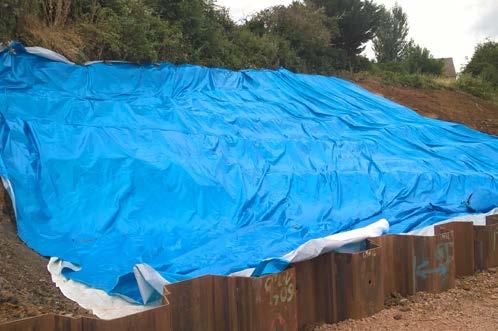
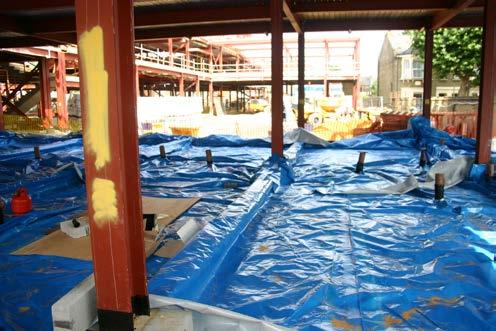

DENDRO-SCOTT ™ ROOT BARRIER




Peter Scott (F.Arbor.A. M.E.W.I., now semi-retired) first created this flexible root barrier membrane over three decades ago, to protect structures and underground services against damage from tree roots and it has been used for this purpose since 1988. It was the earliest established and, therefore, proven, root barrier membrane of its type. Its inception was borne of Peter’s concern that too many trees were being felled, rather than preserved as they should be. His motto has always been ‘Caring for the present is preserving the future’ and we continue to share this ethos.

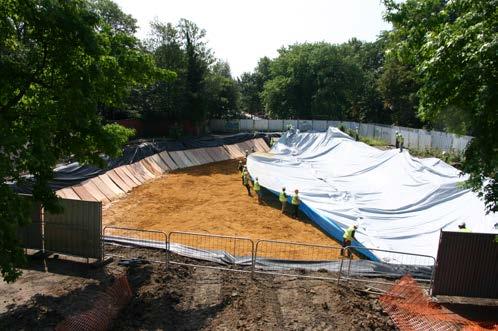

by Japanese Knotweed have become ever more apparent. In the past, even the most ‘seasoned’ of developers dreaded the thought of finding Japanese Knotweed on their sites, as it signalled extensive delays, expensive removal techniques and, in some cases, a complete change to the intended plans for the sites.

Underground

Underground
Cell at ground level Very large cell




Property/land sellers and buyers alike have had their plans thwarted by the presence of Japanese Knotweed.
DENDRO-SCOTT™ Root Barrier’s development continues and, since 1996, is used as an excellent solution for the containment of Japanese Knotweed and other invasive plant species.
Its flexible properties make it easy to mould to any irregular shape. With 27 stock sizes, ranging from a 1m x 10m roll up to a 30m x 30m sheet, it can be used for any size of project and if rolls or sheets need to be jointed on site, this can be done easily with our double-sided jointing tape.
Building ‘cells’ to bury soil contaminated with Japanese Knotweed on site is considerably more cost-effective and environmentally friendly than removing it and also minimises the risk of further spread.
Technical support and advice is available, most importantly for contractors with any queries, as well as at the earlier stages, for designers, specifiers, etc.










